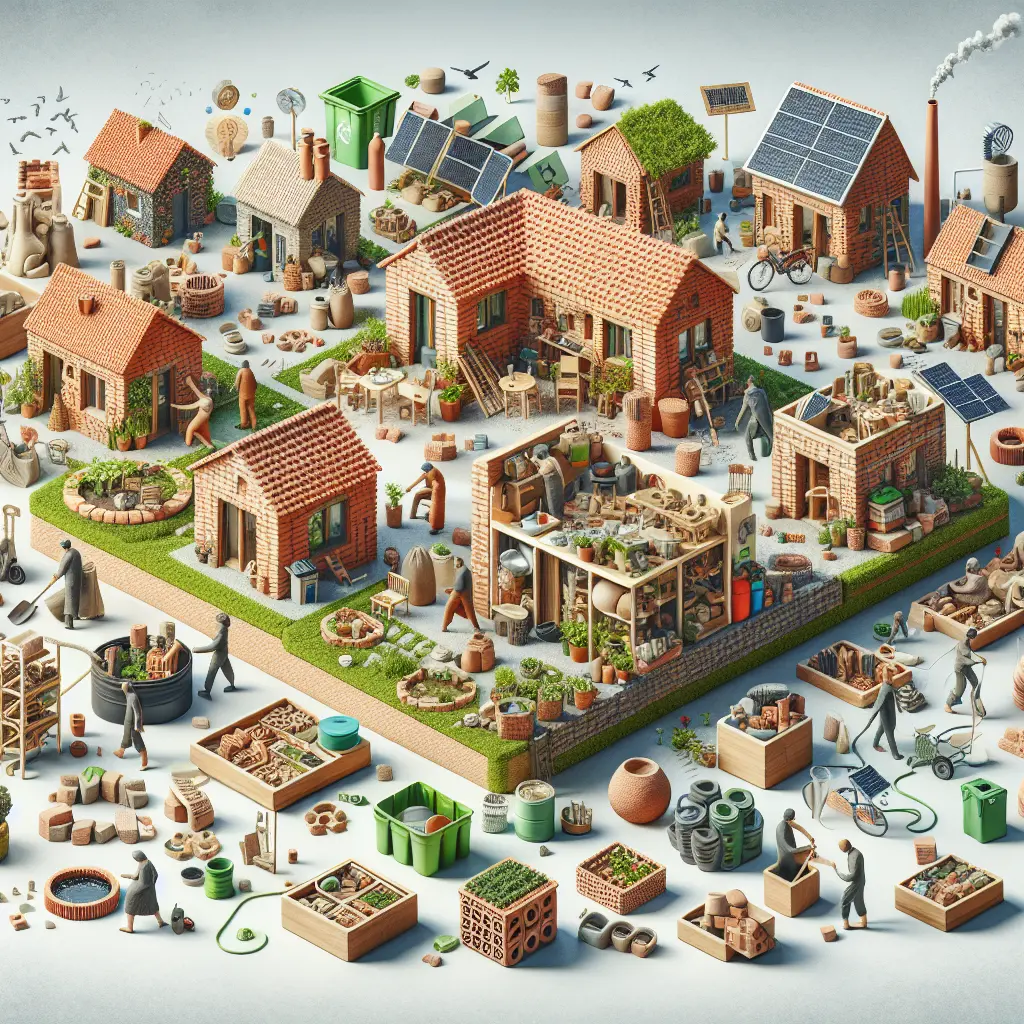
In the quest for sustainable living, the repurposing of clay bricks in architecture stands out as a revolutionary step towards eco-friendly construction.
Sustainable architecture is no longer just a trend—it's a necessity. As our planet grapples with environmental challenges, architects and designers are turning to materials that minimize ecological impact while maximizing aesthetic and functional benefits. One such material making waves in the world of eco-friendly architecture is clay brick, traditionally associated with exterior construction but now celebrated for its versatile applications both indoors and in landscape design.
The Versatility of Clay Bricks
Clay bricks have long been a staple in construction due to their durability and thermal properties. However, their use is expanding beyond traditional applications:
Indoor Aesthetics: Inside the home, clay bricks bring a rustic charm and warmth that is unmatched by other materials. They can be used for feature walls, fireplaces, and even flooring, offering a natural look that seamlessly integrates with various interior design styles.
Landscape Design: In outdoor spaces, clay bricks can transform gardens and patios into inviting retreats. Their natural hues blend beautifully with greenery, and their robust nature withstands the elements, ensuring longevity.
Benefits of Repurposing Clay Bricks
Utilizing clay bricks in new and innovative ways contributes significantly to sustainable building practices:
Environmental Impact: Repurposing existing materials reduces the demand for new resources and minimizes waste, thus lowering the carbon footprint associated with production.
Energy Efficiency: The thermal mass of clay bricks helps in regulating indoor temperatures, reducing reliance on artificial heating and cooling systems, which is both energy-saving and cost-effective.
Cost-Effectiveness: As a durable material, clay bricks offer long-term value. Their low maintenance requirements mean fewer resources are needed for upkeep over time.
Innovative Applications
Modern architects are embracing creative uses of clay bricks to enhance both function and form:
Ventilated Facades: Incorporating bricks in ventilated facades can improve building ventilation naturally, reducing the need for mechanical systems.
Rainwater Harvesting: Permeable brick designs can facilitate rainwater harvesting, promoting water conservation efforts in residential areas.
Acoustic Walls: Clay bricks can also be engineered to improve acoustics within a space, making them ideal for urban environments where noise pollution is a concern.
A Step Towards a Sustainable Future
The journey towards sustainability in architecture is paved with creativity and responsibility. By repurposing clay bricks, architects are not only preserving the environment but also creating spaces that are beautiful, functional, and enduring.
As we continue to innovate and explore new ways of building, let us embrace materials like clay bricks that stand as a testament to our commitment to eco-friendly living. Together, we can build a future where sustainability is at the heart of every design decision.
For more insights into eco-friendly architecture and innovative uses of clay bricks, visit the full article here.
Author: Alana Sterling